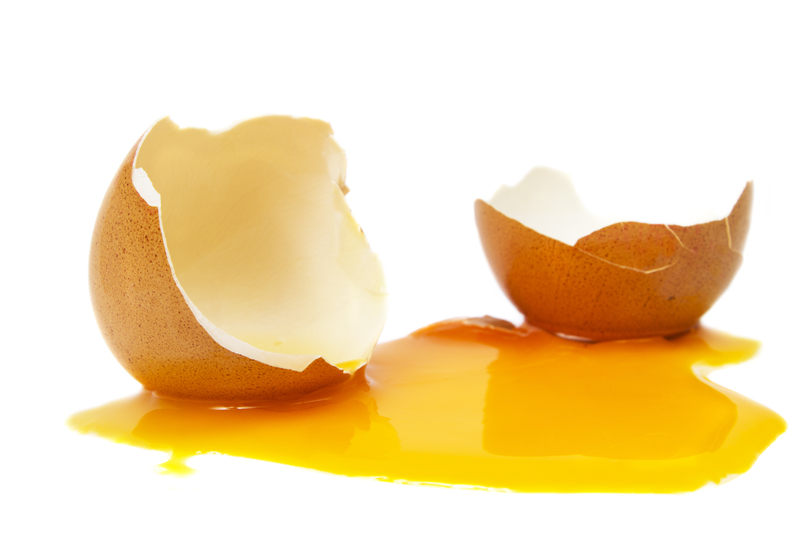The Right Way to Clean Curtains for Long-lasting Beauty
Posted on 13/10/2025
The Right Way to Clean Curtains for Long-lasting Beauty
Curtains are much more than just decorative window treatments; they serve as barriers against dust, pollutants, and sunlight. Keeping your curtains fresh and immaculate is key not only to your home's aesthetic but also to maintaining indoor air quality. In this comprehensive guide, we will cover the right way to clean curtains for long-lasting beauty, using professional tips to help you preserve their color, texture, and durability.

Why Proper Curtain Cleaning Matters
Neglecting your curtain cleaning routine can lead to faded fabrics, unpleasant odors, and built-up allergens. Proper maintenance, on the other hand, ensures your curtains stay vibrant, beautiful, and functional for years to come. Here's why effective curtain cleaning should be a priority:
- Prevents Fading: Eliminating dust and pollutants protects colors and fibers.
- Reduces Allergens: Regular cleaning removes dust mites, mold, and allergens, boosting indoor air quality.
- Increases Durability: Gentle, appropriate cleaning prevents fabric wear and tear.
- Maintains Aesthetics: Clean curtains look brighter, fresher, and more inviting.
Understanding Your Curtain Fabric
Before you begin, always identify your curtain's material. Different types of curtain fabrics require customized care. Not every fabric is machine washable, and some may shrink, fade, or lose shape if not cleaned correctly. Common curtain fabrics include:
- Cotton: Durable, easy to clean, usually machine washable but may shrink.
- Linen: Similar to cotton, can wrinkle easily, often requires gentle washing or dry cleaning.
- Velvet: Rich in texture, needs delicate handling, best cleaned by professionals.
- Silk: Luxurious but fragile, prone to water spots, dry cleaning recommended.
- Polyester & Synthetics: Stain resistant, typically easy to care for, machine washable.
- Sheer/Netted Curtains: Very delicate, require gentle hand washing or a gentle cycle.
Step-by-Step Guide to Cleaning Curtains the Right Way
1. Check the Care Label
Start by examining the care instructions attached to your curtain. The manufacturer's label offers valuable insights, telling you if they are machine washable, hand-wash only, or strictly dry clean fabrics. Skipping this step could lead to irreversible damage.
2. Remove Dust and Debris Regularly
Weekly or biweekly dusting is essential for retaining the beauty of your curtains. Use a vacuum cleaner with a soft brush attachment or shake them outdoors to dislodge accumulated dust. For delicate materials, gently use a lint roller or soft brush to avoid pulling on the fabric.
3. Spot Cleaning for Stains
When you encounter a fresh stain, address it immediately:
- Blot the spot with a clean, dry cloth--do not rub.
- Test any cleaning solution on an inconspicuous area first.
- Use a mild detergent diluted in warm water and dab at the stain gently.
- For oil-based marks, sprinkle cornstarch or baking soda to absorb oils before cleaning.
4. Machine Washing Curtains Properly
Many common curtains respond well to machine washing but always follow these rules for the best results:
- Remove all hooks, rings, and hardware.
- Set the washing machine to a delicate cycle.
- Use cold or lukewarm water to prevent shrinkage and color bleeding.
- Add a mild, fragrance-free detergent.
- Wash curtains separately to avoid tangling and fabric damage.
- After washing, hang curtains back up damp to minimize wrinkles, or tumble dry on a low-heat gentle cycle if the label allows.
Tip: For especially long curtains, fold them loosely before putting them in the washer to prevent twisting.
5. Hand Washing Curtains for Sensitive Fabrics
Delicate materials require extra care:
- Fill a bathtub or large basin with lukewarm water.
- Mix in a gentle detergent, submerge the curtain, and swish softly.
- Rinse thoroughly in fresh water until all soap is removed.
- Do not wring or twist--squeeze gently, then lay flat on a clean towel to remove excess water before hanging to dry.
6. Dry Cleaning: When Is It Necessary?
Certain curtain types like silk, velvet, and heavy brocades are best left to professional dry cleaners. If your label specifies 'dry clean only', do not risk machine or hand washing, as it can damage the fibers, ruin the lining, or lead to color loss.
7. Ironing and Steaming Curtains
Wrinkles can mar the appeal of even the cleanest curtains. To keep them looking crisp:
- Iron curtains on the reverse side using the fabric-appropriate setting.
- Alternatively, use a handheld garment steamer with vertical strokes from top to bottom while curtains are hanging.
- Always test on a small corner to avoid heat damage.
Pro-tip: Hanging curtains while they're slightly damp helps natural weight pull out creases, reducing or eliminating the need to iron.
How Often Should You Clean Curtains?
Maintaining long-lasting curtain beauty is about routine. However, the frequency depends on:
- Location: Curtains in kitchens or high-traffic areas attract more grime and should be washed every 3-4 months.
- Fabric Type: Sheers and light-colored curtains often require more frequent cleaning.
- Household Factors: Homes with pets, smokers, or allergy sufferers may need more frequent curtain cleaning to remove hair, dander, and odors.
- Seasonal Cleaning: A thorough clean at least twice a year is advisable for most households.
Additional Tips for Keeping Curtains Beautiful
- Rotate Curtains: Switching curtains between rooms distributes sun exposure and wear evenly.
- Use Curtain Linings: Linings protect against sunlight, extend curtain life, and are often easier to clean separately.
- Avoid Direct Sunlight: Whenever possible, draw blinds or shades behind curtains during peak sunshine hours to prevent fading.
- Air Out Curtains: Freshen your curtains between washes by hanging them outside (away from direct sunlight) for an hour or two.
- Test Cleaning Products: Avoid harsh chemicals or bleach unless the care label specifically permits them.
Common Curtain Cleaning Mistakes to Avoid
To protect your curtain's longevity and style, steer clear of these common missteps:
- Ignoring Care Labels: Skipping fabric-specific instructions can lead to damage, shrinkage, or color loss.
- Overloading the Washer: Curtains need space to move--cramming them can crease and tear fabric.
- Using Hot Water: High temperatures may shrink curtains and fade colors.
- Rough Handling: Wringing, scrubbing, or twisting can distort the shape and weaken fibers.
- Improper Drying: Never tumble dry on a high heat unless directed by the care label.
How to Clean Special Types of Curtains
Cleaning Blackout and Thermal Curtains
Blackout curtains often have a foam backing that can become brittle if exposed to heat or harsh detergents. Here's how to clean them:
- Vacuum or dust regularly.
- Spot clean stains gently with a damp cloth.
- Hand wash if necessary; avoid machine washing unless label approved.
- Air dry away from direct heat or sunlight to prevent the lining from cracking.
Sheer and Delicate Fabric Curtains
- Hand wash in cold water with a mild, bleach-free detergent.
- Soak rather than scrub to protect delicate threads.
- Gently squeeze out water, reshape, and hang to dry while damp.
Embroidered or Beaded Curtains
- Never machine wash.
- Spot clean stains, or consult a professional curtain cleaner for intense cleaning.
- Store and handle with care to prevent bead loss or thread snags.
DIY Curtain Freshening Between Washes
- Deodorize: Lightly mist with a fabric refresher spray for a quick scent boost.
- Steam: Use a handheld steamer to kill bacteria and remove light odors between deeper cleans.
- Shake and Air Out: Take curtains outside for a gentle shake and hang in the breeze.

When to Replace Your Curtains
No fabric lasts forever. Even the best-maintained curtains will show wear over time. Replace your curtains if you notice:
- Fraying, tearing, or thinning fabric.
- Persistent stains or odors despite cleaning.
- Significant fading or sun damage.
Maintaining beautiful curtains is a blend of prompt cleaning, regular upkeep, and selecting the correct cleaning method for your specific fabric.
Conclusion: Keep Curtains Looking New for Years
Practicing the right way to clean curtains for long-lasting beauty makes a noticeable difference in your living space. By:
- Choosing fabric-appropriate cleaning techniques,
- Following a regular dusting and washing routine,
- Using gentle products, and
- Avoiding common cleaning mistakes,
you can ensure your curtains remain as striking as the day you hung them. Remember, well-care for curtains don't just frame your windows - they frame the beauty and health of your home. Invest a little effort, and your curtains will thank you with freshness and elegance for years to come.



